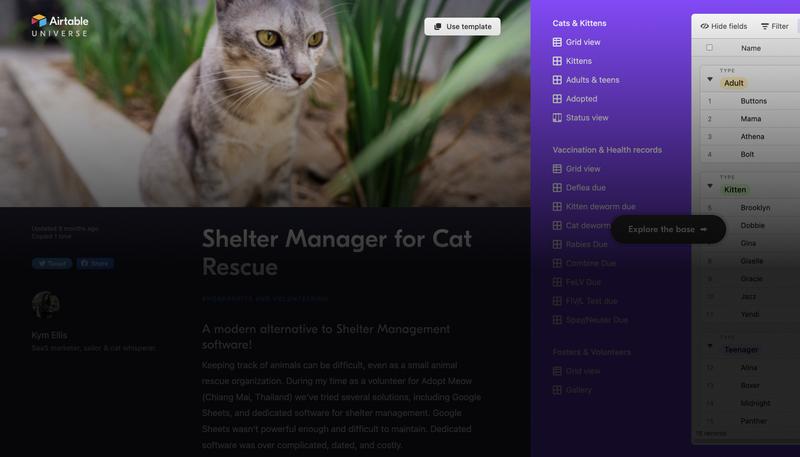When I was planning moving aboard a boat with my adopted cat Kevin, I started researching everything I needed to know to keep him safe on a sailing vessel. I went down all of the rabbit-holes of emergency medical care, nutrition, seasickness and how to find him if he ever gets lost.
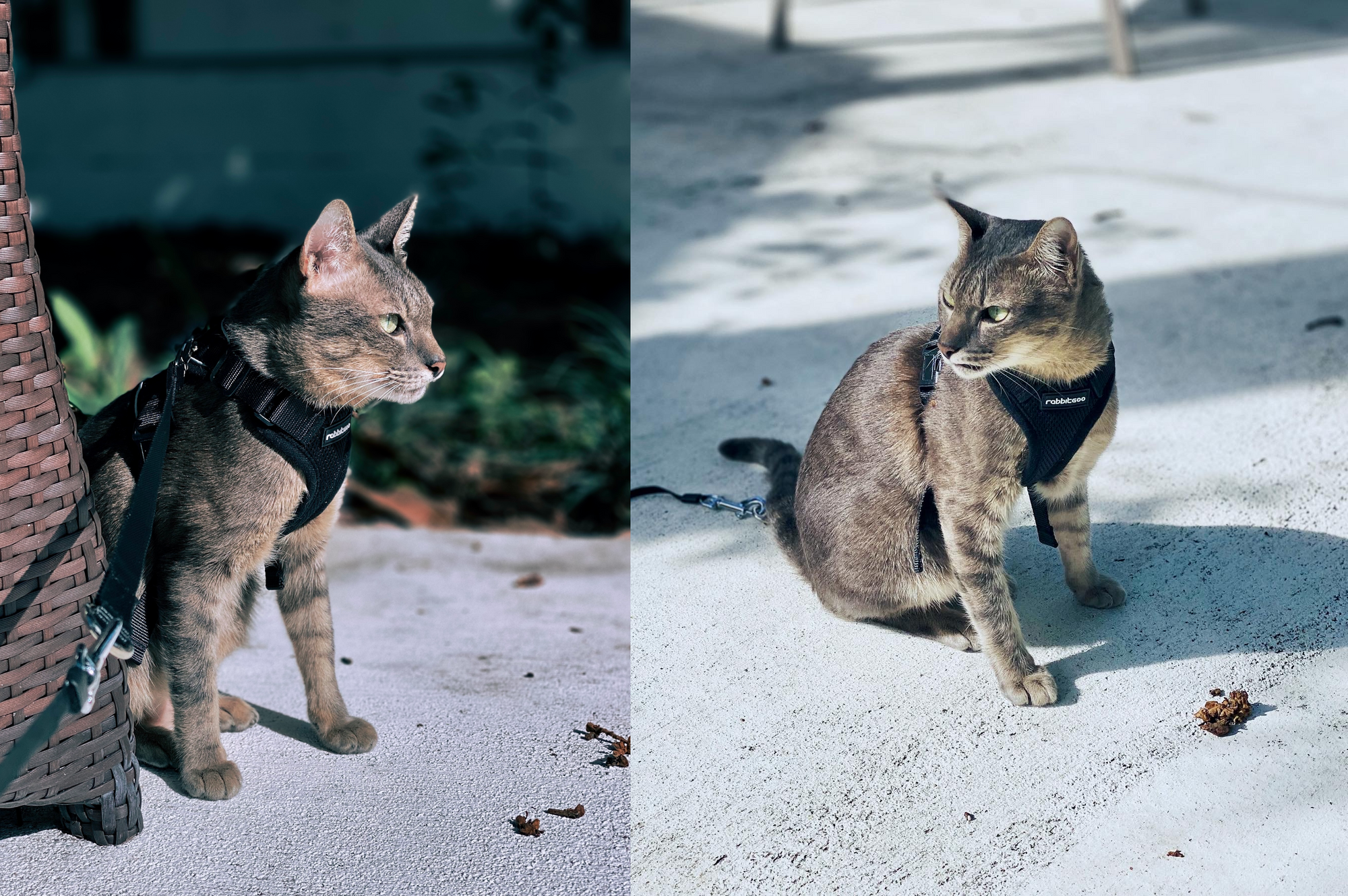
I was disappointed to find that the pet tracking products on the market were confusing. It wasn't entirely clear how they worked just by reading product descriptions and marketing websites alone and I never trust product reviews on the internet these days. Suitably perturbed, I started getting deeper and deeper into the world of "how the heck do I track my pet" — and I discovered that there's simply no one-size-fits-all.
I wish this information was easier to discover, so I wrote this article with everything I've learnt. I hope you find it useful!
This article does not review individual tracking devices. Instead, it explains how different types of tracker actually work, to give you the information you need to make better purchasing decisions for your specific circumstances. I am not affiliated with any of the products listed in this article, nor do I make any commission at all.
TL;DR (this article is 2,600+ words)
We're gonna talk about how GPS, radio frequency and bluetooth cat trackers work in detail. If you only have a few minutes, here's some quick links and answers.
- Have an indoor cat that likes to hide in the house? Consider an Apple Airtag ($) or a Tile ($)
- Got a supervised adventure cat? Look into the TabCat ($$) Apple Airtag ($) or a cellular GPS option like 🇺🇸 Whistle, Tractive, 🇪🇺 Weenect or 🌏 Pawtrack ($$$$)
- Cat goes out unsupervised in an urban area where cellular connection is available?
🇺🇸 Whistle, Tractive, 🇪🇺 Weenect or 🌏 Pawtrack ($$$$) - Live in a remote place, on a boat or in an RV? Read the whole thing. You knew this life wasn't gonna be easy! 😉
Types of cat tracking devices
The most common options for tracking your feline can be categorised by the type of technology they use. This is important to understand since it should give you the knowledge required to decide what you need for your individual circumstances.
We're going to take a look at:
- Radio frequency trackers
- Bluetooth trackers with a mesh network
- GPS trackers that rely on a cell connection
- GPS trackers that don't rely on a cell connection
RF radio frequency trackers
Radio trackers use a radio frequency to connect a device that you hold in your hand to a tracker on your pets collar or harness. This gives you a "hot or cold" type of feedback loop to figure out where your cat is.
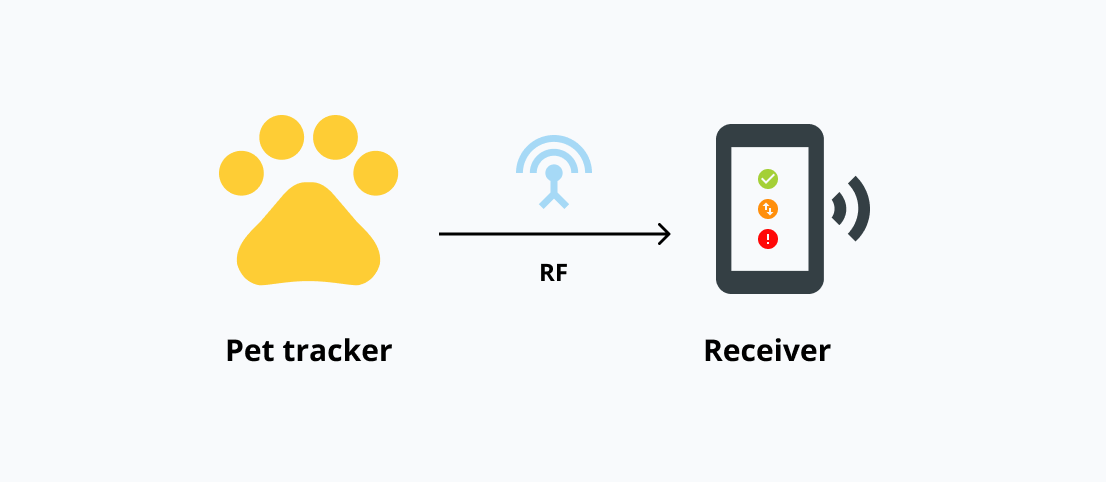
Most devices in this category use sounds and lights to indicate when you're getting closer to your pet and come with several benefits such as long battery life and high accuracy (to within an inch).
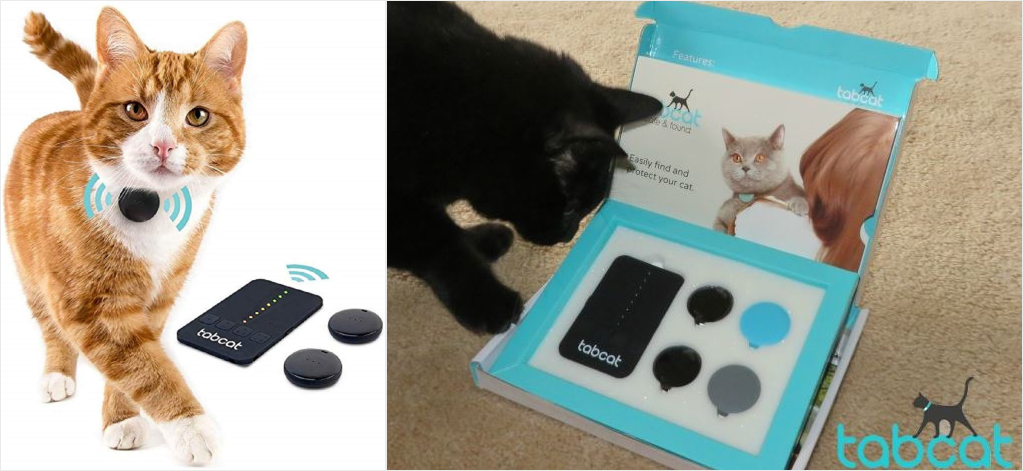
These devices are not GPS based, and can't tell you the exact whereabouts of your cat, but they're a great backup to help you find your cat within a short distance.
- Pros: High accuracy, affordable with no subscription fees, longest battery life, lightweight and compact trackers suitable for cats are available
- Cons: Limited range, most useful if your pet is always supervised, no GPS location
- Trackers that fall into this category: TabCat by Loc8tr, Marco Polo
Bluetooth trackers
Bluetooth trackers like the popular Apple AirTag and Tile are being used by lots of pet owners, with good reason. They're small, easy to attach to a collar, affordable, and offer peace of mind when it comes to locating your cat.

These tracking devices were designed to be put on your keys or in your backpack, and use Bluetooth to send a signal between your smartphone and the device, which makes a beeping sound to help you locate it. The range varies between 150ft to 400ft for different Tile models, and up to 800ft for the AirTag. Since Bluetooth requires line-of-sight, these types of trackers are most useful to track your cat inside your home or garden.

One extra feature is that if your AirTag or Tile is out of range of your phone, you'll see the last known location on a map. Beyond that, these devices also use a mesh network to determine a location. So for an AirTag, if there are other Apple devices nearby, your AirTag will bounce off them and generate a more recent location update. Tile does the same thing, using other Tile's nearby.
There are unquestionably more Apple devices in the world than Tile's, so in this situation the AirTag should provide better results (in theory). However, if you're not in an urban area you might find that this feature doesn't work at all.
- Pros: Affordable, compact, great battery life, tracking device can make a sound to help you locate your pet
- Cons: Short range, relies on other devices nearby within Bluetooth range, not useful in a remote location
- Trackers that fall into this category: Apple AirTag, Tile, Cube, Cat Tailer, Pawscout, Key Finders on Amazon.
Cellular GPS trackers
GPS tracking devices for pets typically use a combination of GPS plus cellular data to track your cat. The Global Positioning System (GPS explained) allows receivers (like your cat tracker) to calculate their distance from four or more satellites in space, to pinpoint a location with precision.

It's important to note that while the GPS device can determine it's own location without internet, it still needs a method of sending the location to you so you can keep an eye on your pet. This is where cellular data comes in, which is an affordable and accessible method to do this.

This means that these trackers require a subscription that you need to purchase from the manufacturer, or in some cases you're able to insert your own SIM card into the device. Either way, it's not a one-off investment, but something you'll have to pay for monthly or yearly.
- Pros: Real-time tracking, provides an actual map location using GPS, no distance limitations, some products are lightweight enough for cats
- Cons: Most expensive option with monthly fees, relies on cell data, batteries need replacing or charging a lot more (every ~2 days)
- Trackers that fall into this category: Tractive, Whistle, Weenect, Jiobit, Fi, Gibi, Tracki, Pawtrack, Geozilla (use your own SIM).
Side note: The Pawtrack is the only GPS tracker which claims to cover the entire world by connecting to various cell networks depending on where you are. It also uses GLONASS and Galileo in addition to GPS (alternative global navigation satellite systems) which would suggest this tracker is the most accurate. I haven't personally used it though, so I can't comment on whether their website claims hold up.
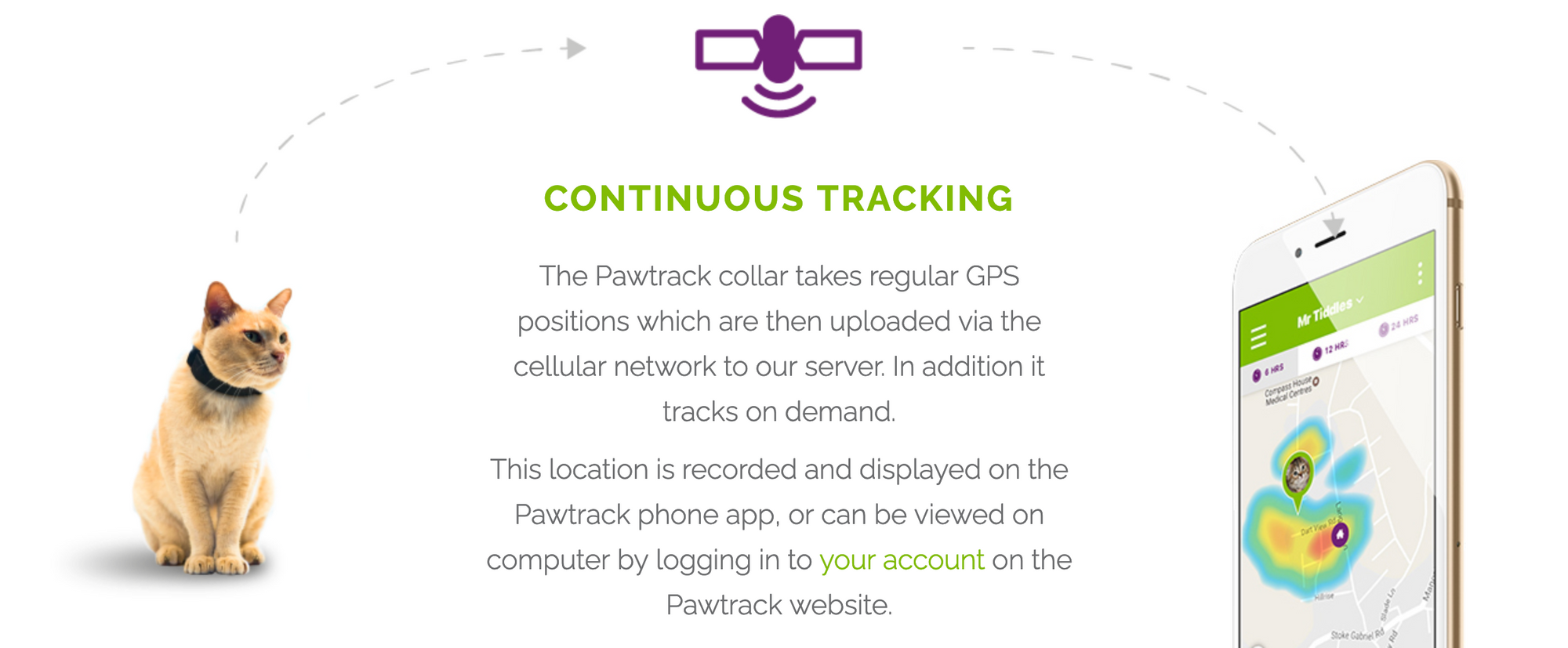
Pet trackers that require a subscription may seem expensive at first glance, but this reliance on a cell network gives you the most accurate long-range tracking solution for pets that can fit into a relatively lightweight device. This extra cost buys you a significant advantage over any other type of pet tracker.
GPS trackers that don't rely on a cellular connection
If you start searching for GPS pet trackers which don't require a cell connection, you'll begin to find more professional satellite tracking products like the Spot Trace or the Garmin Astro 430 (which costs $649 and is for sporting dogs). These types of products are more expensive and much bigger in size.
The Spot Trace satellite tracking device is most often used by people who want to track costly possessions like boats or cars. Rather than using a cellular network — the Spot uses satellite internet to send its location to your device. It still requires a monthly subscription, but it can be used almost anywhere in the world, even if there's no 4G/5G signal. It's not a designated pet product, but it's actually quite affordable to buy the device and the monthly costs are similar to what you'd pay for a GPS tracker with cellular subscription.
The biggest downside is that it's quite bulky, coming in at almost 7cm height and 88 grams in weight. It would be quite a challenge to attach to your cat's collar, but could potentially work with a harness.
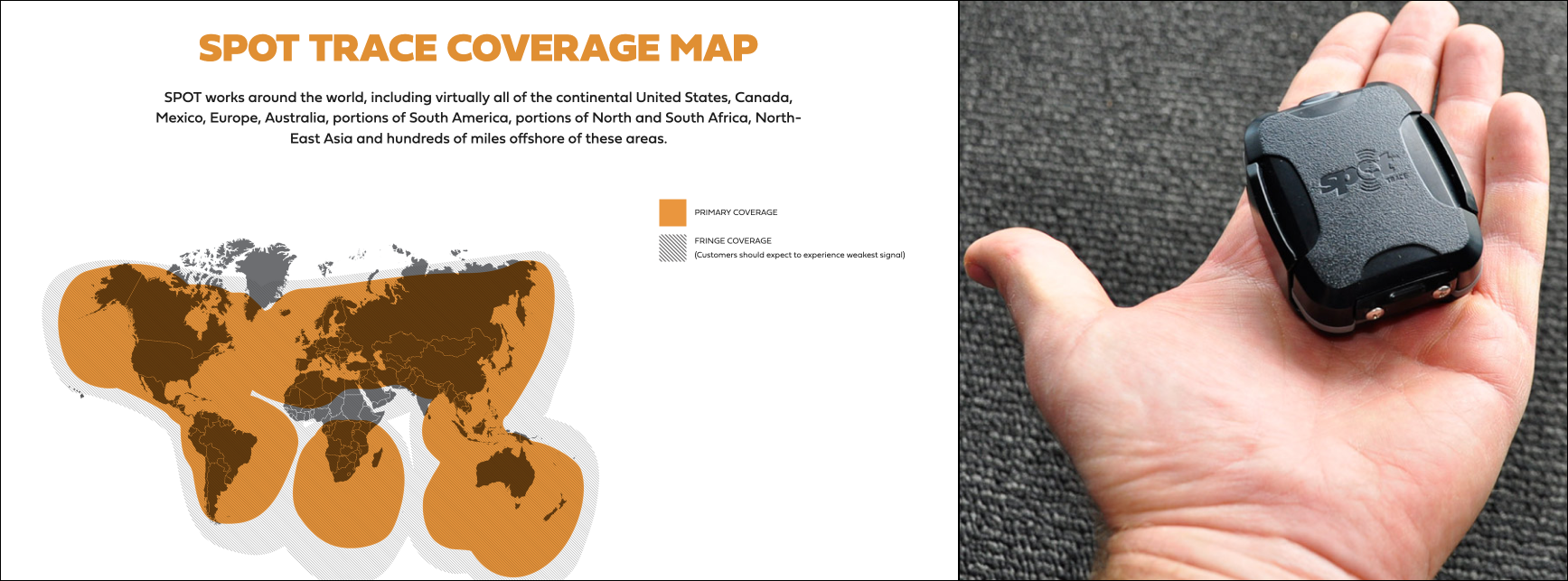
Watch out for fake GPS trackers 🚨
There are some products that claim to be GPS, but if you look closer they're actually RF devices that piggyback on the GPS in your phone.

These products tend to be cheaper than true GPS trackers and marketed as "GPS trackers that don't require a cellular network connection or monthly subscription." Examples of these products include the Findster Duo and PetFon.
These products probably work just as well as any other RF device because they're using the same technology — but they're not GPS trackers, and marketing them as such is misleading.
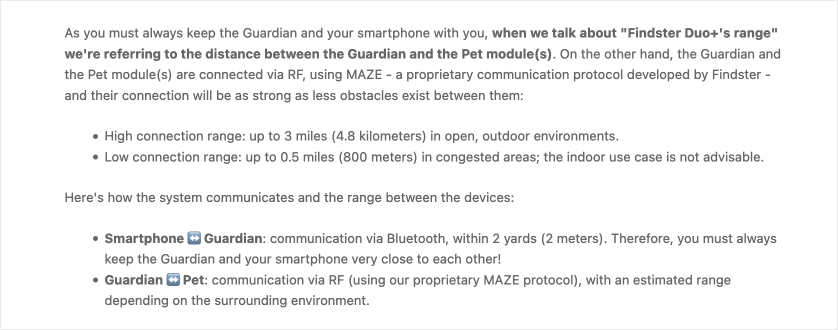
The map you see with these types of tracker is an estimated position based on the radio frequency direction and intensity — and you'll have a more limited range compared to a true GPS tracker. Plus, there are more points of failure using this type of technology, because you're relying on the RF devices, a bluetooth connection to your phone, and on your phones GPS to be working. If any of these fail, it simply won't work.
Choosing the right tracker
There's no right or wrong answer, everyone has different needs.
None of the trackers we've discussed so far will have the same success rate as keeping your pet enclosed and keeping them on a harness and leash when outside. You should always get your pets microchipped, and put contact details on their collar as the most basic requirements.
Beyond that, many of us want a solution that will give us peace of mind, and provide a backup in case of emergencies. That is where trackers are useful.
Below are a few of the most common scenarios and a very brief buying guide. Ultimately the choice is yours and I hope the information in this article has already given you a good idea of what is right for you!
🏡 My pet never leaves the house
If you never let your cat out of the house but want something to help track them down when their game of hide and seek gives you heart palpitations, you can definitely consider some of the more budget options such as a Bluetooth tracker or an RF tracker.
Many people also train their pets to associate the AirTag or Tile's beeping with treat time, which is a great idea. This means you can make your cat beep and have them come running to find you.
🦮 I take my pet for supervised walks and adventures
Most people who take their pets out on walks are looking for a backup solution in case of emergency. This is especially important if you trust your pet to explore off-leash. In this scenario you could pick either of these two options:
- RF tracker — this is a highly accurate and affordable option, and since you're always supervising, it should be enough to get you out of a tight spot if your pet manages to wander away from you.
- Cellular GPS tracker — if you're willing to spend more on the monthly fees, this would be a more robust option which may offer better peace of mind. Remember to pick a tracker that works where you live, or if you travel, consider a worldwide option like the Pawtrack.
🐈⬛ My pet is allowed to roam, or leaves the house at free will
At this point you're going to need both range and location to stand a chance of finding your cat. A cellular GPS tracker with a subscription would be a great option so you can monitor your pets roaming activities without any distance limits and keep a close eye on what they're up to.
I've also seen some people use RF devices in this scenario who have had success with walking out of the house and following the trail. But if you have a cat with a larger territory and you have no idea where they roam, then this might not work very well which would be very frustrating.
⛵️I live on the water
For fellow sailors who are worried about their pet falling overboard, you might want to consider something totally different while aboard your boat, like the OLAS GPS Crew Tracker. These are great to have on board for humans and animals, especially during a night passage.
We connect our OLAS devices to an iPad which is always on charge in the saloon. If the connection between the OLAS device and the iPad is broken it will play a loud alarm to alert you that someone has fallen overboard. The downside is that Bluetooth can be unreliable at times, so you you might experience some false alarms.
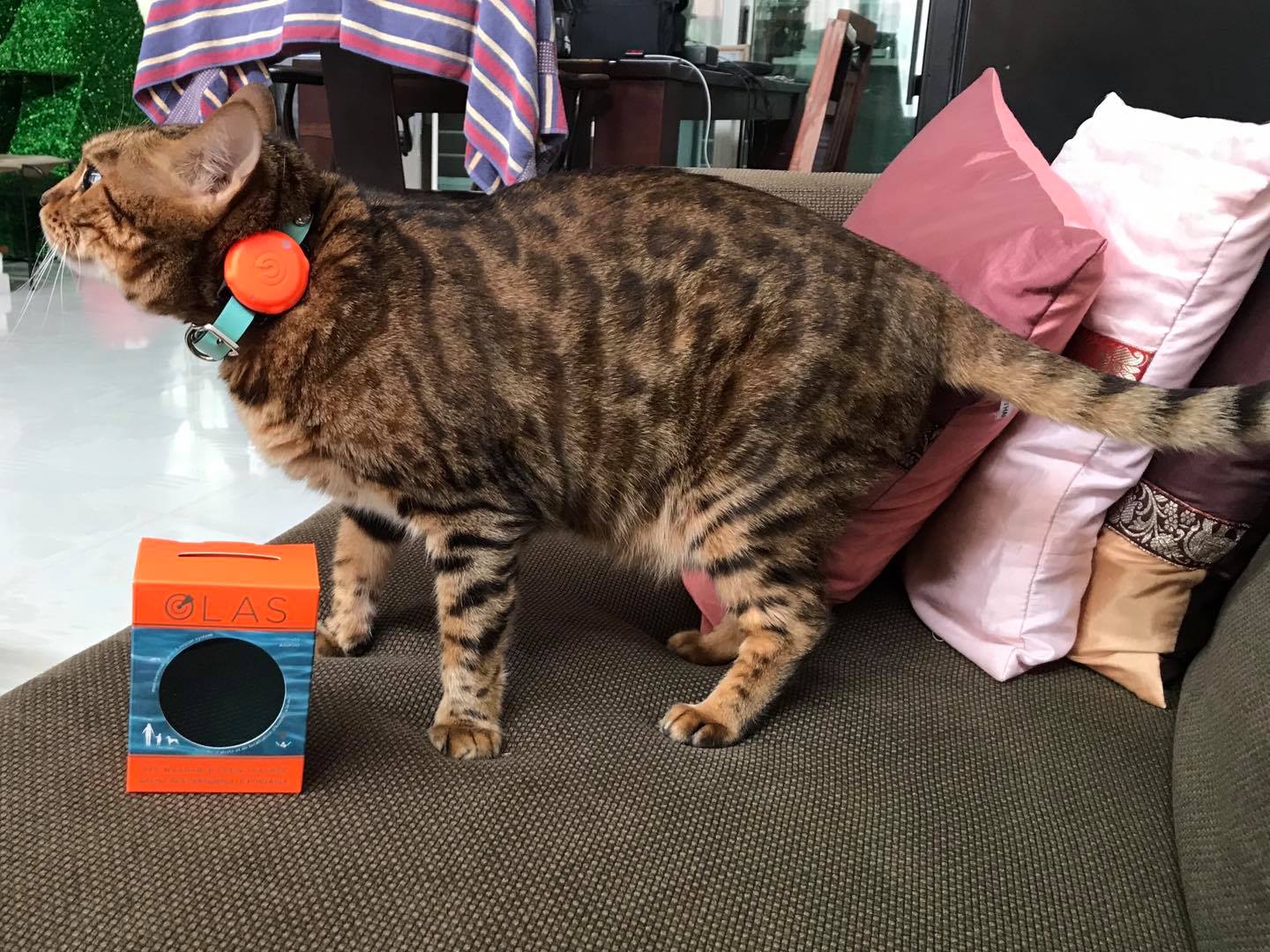
If you allow your cat to roam your boat when at anchor, this is a great solution to alert you if they became a little too curious about the water.
I'd always recommend keeping cats inside the boat at night, or when you head to shore. I've seen so many stories of boat cats going missing, it's just not worth the risk.
🌎 I live in a remote place where cellular connection is poor
If you're remote with little cellular connectivity, there's no perfect solution, but a GPS tracker that relies on a cell network is clearly not a good choice here.
If you're looking for a backup option for a supervised pet who doesn't stray far, you can try an RF based tracker like the TabCat. If you'd prefer to use GPS then you'll need to consider something powered by satellite internet like the Spot Trace.
I have the TabCat, an AirTag and an OLAS Crew Tracker for Kevin. I found the TabCat to be very reliable in terms of short-distance tracking, but the quality of the device isn't very good and the plastic of the handset deteriorated within a year.
These days, Kevin always has his AirTag on his collar permanently and it's been working great for our needs. I'm actually using the silicone holders that came with the TabCat to house his AirTag.
I'm a very protective cat parent. Kevin is highly supervised, and is never left outside on our boat if I'm not around. I pretty much know where he is at all times. Despite this, he has managed to sneak past my defences a couple of times to go and explore other people's boats in the marina (🙄) and the AirTag successfully helped me to find him. I also use it constantly to find out where he is inside the boat, and he usually comes looking for me when I ping his tag.
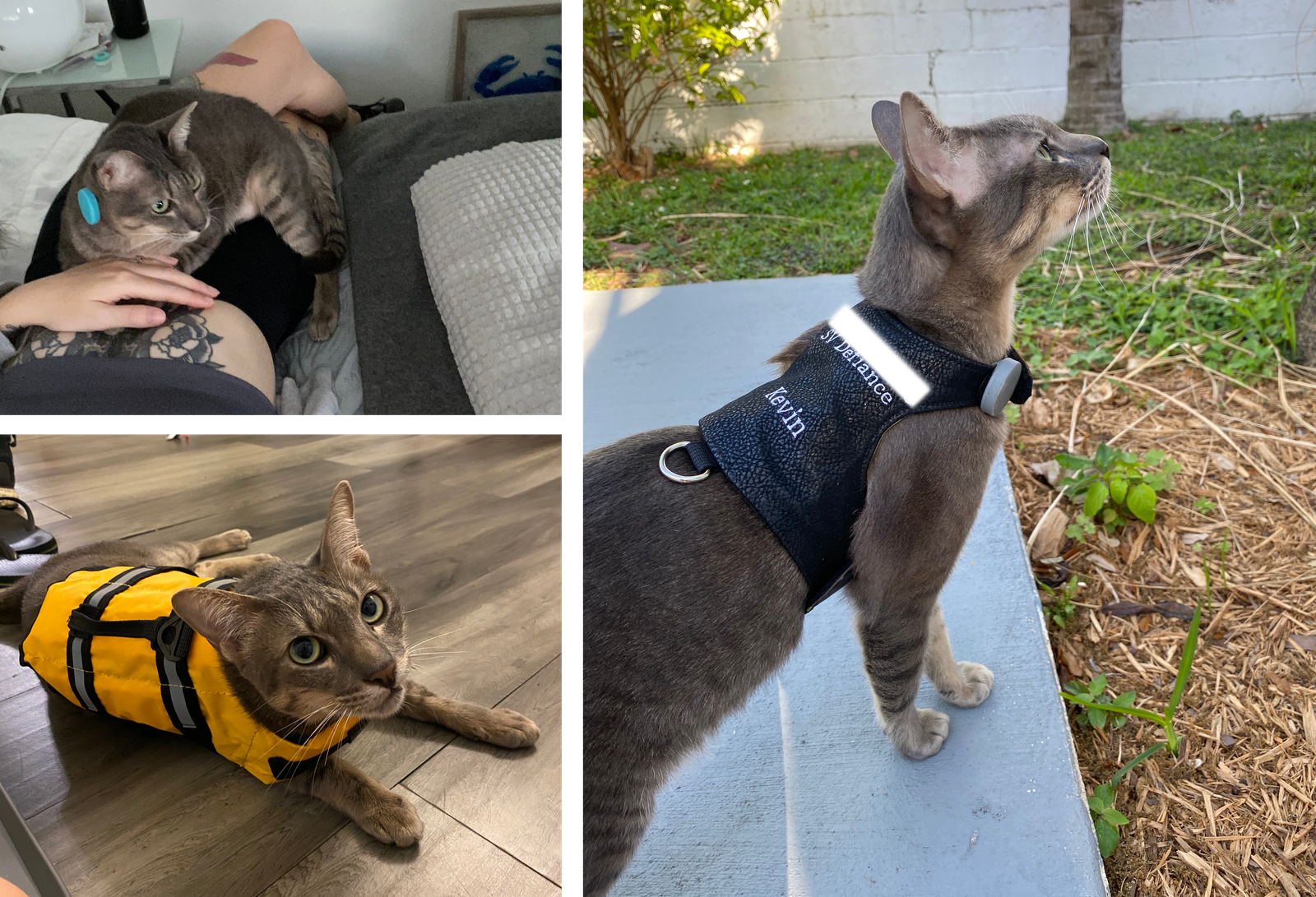
Since Kevin doesn't really like land adventures, this setup works perfectly. If our circumstances change, I'd definitely consider giving the Pawtrack a shot.





